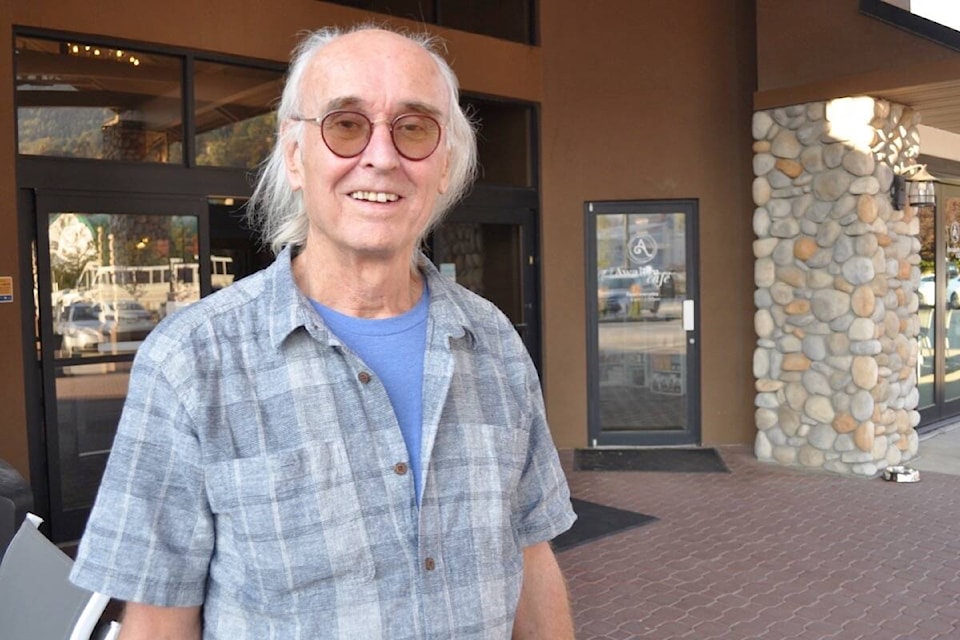The head of a group advocating for solutions to the toxic drug crisis says Nelson has local expertise that needs to be heard by the provincial and federal governments.
The Canadian Drug Policy Coalition visited Nelson for a two-day event called Getting To Tomorrow that invited harm-reduction advocates and social services to share ideas with the goal of mitigating, if not solving, a crisis that has killed over 10,000 British Columbians since 2016.
Donald MacPherson, the coalition’s executive director, said the group is visiting cities across Canada as it develops policy recommendations based on feedback. Nelson, he said Monday, made sense to host the event due to the number of advocates already at work in the city.
“It’s got some capacity to take things to the next step. …,” said MacPherson. “We could have gone anywhere in B.C., but there is a group of people who are really interested in and committed to advocacy for changes in drug policy.”
Calls for safe supply are increasing as illicit fentanyl and carfentanil have led to year-over-year increases to B.C.’s drug deaths. But opinions differ on what safe supply should be defined as.
The provincial government’s safe supply program has focused on opioid agonist therapy (OAT) treatments, or pharmaceutical opioids such as methadone or Suboxone, which are meant to be safe alternatives to street drugs that be used in concert with recovery options.
Users however say the treatments are ineffective because they don’t provide the same high as street drugs, and that barriers such as transportation, supply scarcity and even a lack of doctors willing to prescribe the opioids mean the program is an unrealistic alternative.
Harm-reduction advocates are increasingly calling for safe supply to be actual street drugs such as heroin and cocaine that have been previously tested for fentanyl before being provided to users.
Cheryl Dowden, executive director of ANKORS in Nelson, said safe supply should be considered an extension of OAT. Medications for substance users, she said, need to be similar to what is available in the illicit drug market.
The response to toxic drugs, Dowden added, should be treated the same way as if a water supply was tainted.
“If our water was poisoned, we would take a population health approach to replacing that water with potable water. So in fact it’s very similar.”
MacPherson, who previously worked as the City of Vancouver’s drug co-ordinator, credited the provincial government with acting on the crisis while other provinces have stayed relatively silent.
Health Canada says over 30,000 Canadians died due to toxic drugs between January 2016 and March 2022, but MacPherson argues the crisis isn’t prioritized in public discourse.
“People often don’t just get past that drugs are bad, people shouldn’t use them,” said MacPherson. “They don’t have any understanding of the complexity of substance use, the complexity of the drug market. And these are families with kids, and their kids are going to have to navigate all these complexities of using substances, of illegal substance drug markets.
“There’s not a sophisticated discussion going on.”
Those complexities were apparent during a round table Monday at the Prestige Lakeside Resort where the event took place.
Questions about safe supply inevitably brought up issues that can’t be solved by either the health ministry or the Ministry of Mental Health and Addictions. Unreliable rural transportation and a lack of affordable housing were the most frequently cited barriers users face when trying to access supply or treatment options.
There also remains questions about how law enforcement will work when British Columbia’s three-year decriminalization program begins Jan. 23, 2023.
After the provincial and federal governments announced in May that possession of up to 2.5 grams of illicit drugs would be allowed, there were conflicting messages from Addictions Minister Sheila Malcolmson and local police on how officers would enforce the new law.
In August, Dylan Griffith of Kootenay Insurrection for Safe Supply distributed small, tested supplies of heroin, cocaine and methamphetamine to users that had been supplied by Vancouver-based Drug Users Liberation Front.
Griffith said users need more options to access safe supply than at pharmacies. Compassion clubs were one idea put to the group, but Griffith added eventually a regulated drug supply needs to be made available in retail stores just as cannabis and alcohol are.
Knowing how drugs can be accessed in safe environments, he said, will lead to better health outcomes for people with substance-use disorders.
“Once people have that stabilization then they can start stabilizing other aspects of their lives.”
READ MORE:
• B.C. mom runs daily marathon in front of health ministry office after son dies of drug poisoning
• Nelson has 2nd highest rate of homelessness in B.C. interior: report
@tyler_harper | tyler.harper@nelsonstar.com
Like us on Facebook and follow us on Twitter.
